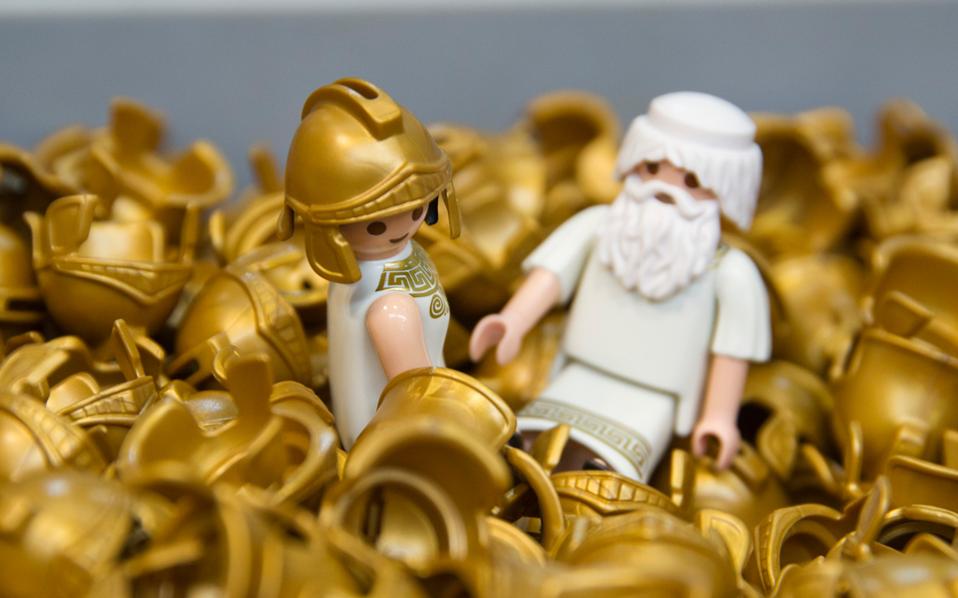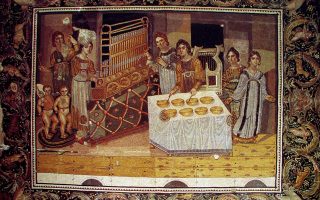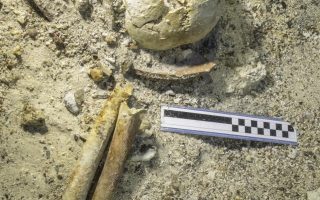Playmobil looks to ancient Greek mythology for inspiration

“Have you seen Athena’s helmet?” “No, but I’ve got Zeus’ lightning bolt and cloak. I still can’t find his hair!”
It’s a warm day with humidity levels at around 90 degrees and I am among a group of Greek journalists visiting a factory in Malta: 10 adults acting like kids. It’s an inevitable transformation as soon as you cross the threshold of the Playmobil factory on the Island of the Knights. Some 100 million of the little plastic figures have been produced here every year since 1974, when Playmobil Malta Ltd was founded, and the total number has now surpassed 3 billion. The production line of the biggest factory outside Germany (which employs around 1,000 workers) spits out 32 plastic figures every 10 seconds.
The purpose of the press visit is that, for the first time in its history, the toymaking giant has produced two figures for the Greek market inspired by Greek mythology: Olympian gods Athena and Zeus. Part of the proceeds from their sale will go toward the ELPIDA association of friends of children with cancer and its Orama Elpidas volunteer bone marrow donor bank, as part of the Playmobil Play & Give initiative. It is worth noting that, to date, Playmobil Hellas has donated 80,000 euros to the association to set up and support its marrow and bone donation banks, constituting one of its main sources of funding.
The Playmobil Athena is decked out in a white chiton with gold details and an orange cloak. She holds a spear and a shield depicting a kid-friendly version of Medusa’s head. The box in which she’s sold also contains an owl and snake (symbols of her wisdom).
Zeus sports a long white beard and his clothes are also adorned with gold details. He holds a lightning bolt and the box also contains an eagle. I don’t know what an ornithologist would have to say, but it certainly doesn’t look like any of Greece’s native species, though it does bear an uncanny resemblance to the bald eagle that has been the emblem of the United States since 1782. Maybe I’m just being pedantic, and the truth is that the new figures are sure to be a big hit with children, as well as parents who grew up with Playmobil toys – and I’m looking forward to the launch of the other 10 gods.
A bit of background
Playmobil was German toymaker Brandstatter’s response to the oil crisis in the 1970s, when the costs of producing plastic shot up, necessitating the production of smaller, cheaper toys. Inventor Hans Beck, the company’s head of research and development, decided in 1974 to create a 7.5-centimeter plastic figure with simple human features.
The first three Playmobil figures that were launched – a knight, an American Indian and a builder – received a lackluster reception from toy sellers at the International Toy Fair in Nuremberg, who believed that Beck’s tiny plastic dolls would not be able to survive in the international market. Kids all over the world, however, appeared to have a different opinion, and today the Playmobil catalog has 400 different figures, with hundreds of accessories and settings.
Zeus and Athena are available at the Playmobil FunPark in the northern Athenian suburb of Kifissia and at toy stores across the country.





